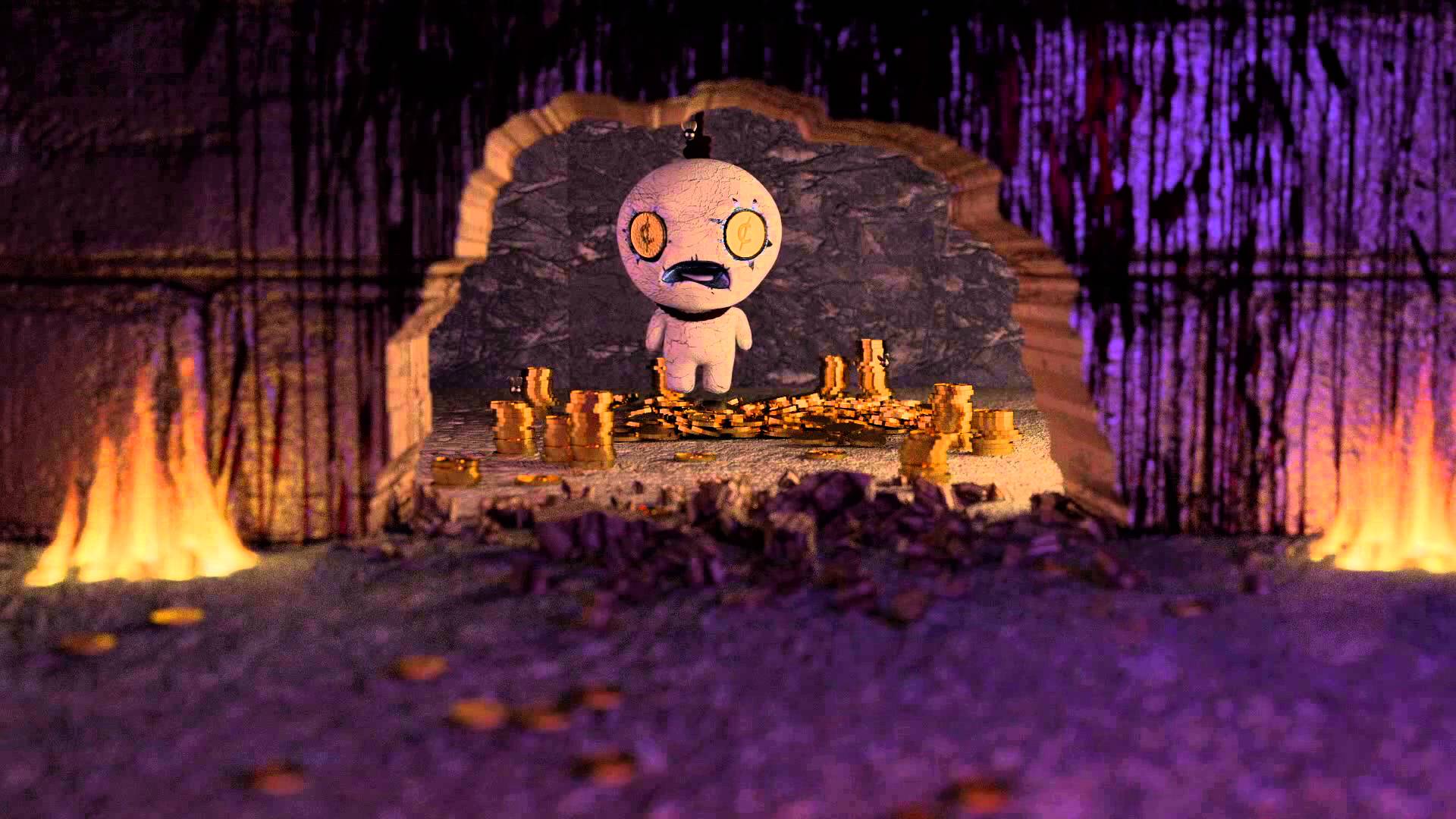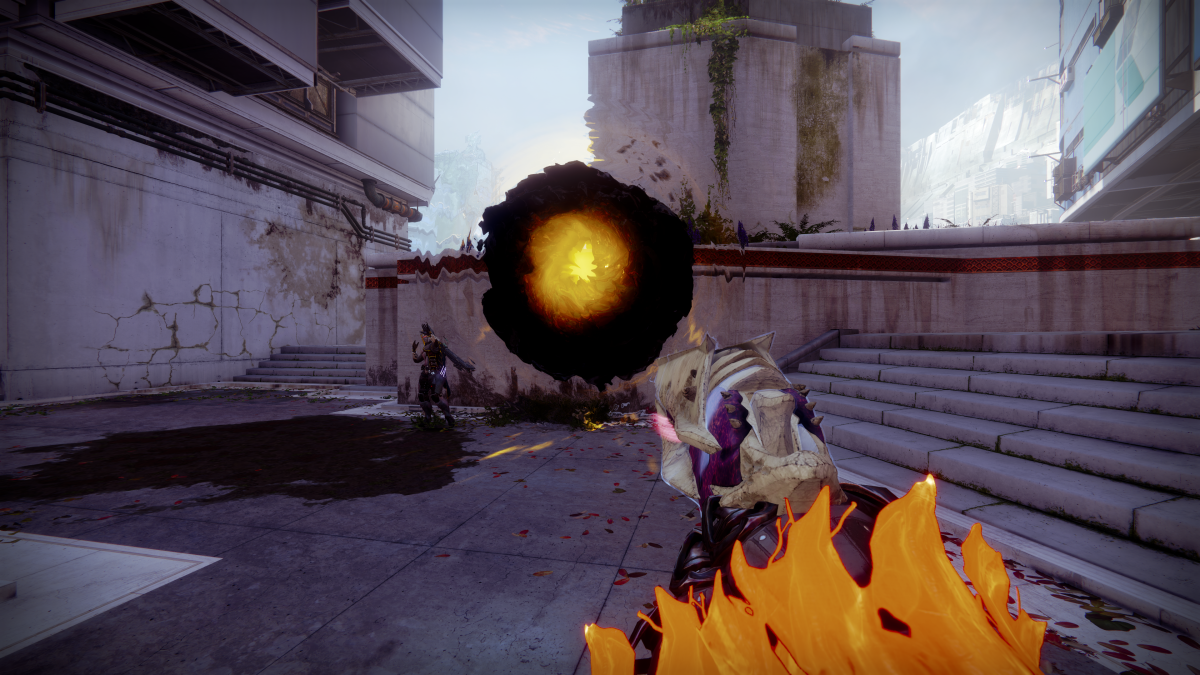Deal with the Devil
The Binding of Isaac has always been a game of contradictions to me. It’s both a game that embraces the fickleness of chance and the purity of skill. That encourages you to play around, explore, and experiment, but also rewards players who can coldly dismantle and manipulate game mechanics. It’s juvenile in the most grotesque ways, featuring enemies made of poop and items based on diseases, but it’s also slyly hides a deeper message shared with an almost confessional intimacy.
Last year, I put my name on the line and gave Rebirth a coveted 10/10 score, I said it was as close to perfect as possible. Now Afterbirth, a massive DLC expansion to the already monstrously sprawling Rebirth is out, ready to drag players back into a world of shit, piss, and gaming bliss. Does it give Isaac the final bit of lift necessary to ascend to all the way to nirvana? Or is it hubris to try and improve on something already so good, and only serve to drag it down into the abyss?
Bewilderingly, it does both at the same time.

Binding of Isaac: Afterbirth (PC)
Developer: Nicalis, Edmund McMillen
Publisher: Nicalis
MSRP: $9.99 (DLC), $24.99 (Bundle with Rebirth)
Released: November 4, 2015
Afterbirth‘s “back of the box” bullet points are impressive – 120 new items, new level variations for every floor, a pack of new bosses and enemies, a new character, and an entirely new game mode to round it off – but those numbers only tell half of the story (maybe only a quarter). Any game can just add a bunch of new stuff, a crate of duplicate items, a pack of palette-swap enemies, a few coats of paint on some old levels, whatever. What makes Afterbirth so special isn’t just how many new little doodads have been dropped into the game, but how perfectly the new additions entwine themselves into the experience. How they fit right in, but at the same time dramatically warp and twist the classic Isaac experience into an entirely new entity.
Afterbirth takes a lot of risks to introduce new wrinkles and mechanics. Almost every new item does something wild, or weird, or aggravating. The Glass Cannon lets you fire a powerful mega shot every few seconds, at the cost of depleting your health down to a perilous single half-heart. The Fruitcake randomly changes the type of tears you fire with every shot, constantly shuffling between spread shots, homing tears, holy bolts, and the occasional randomly exploding fire shot (always a treat when you’re not expecting it). Items like the Scalpel, an infinite use ability that lets you make portal style tunnels between two points (either in the same room or different ones) complete changes the way you approach room exploration and some boss fights. Things like the occasional “Item Recycler” in an item room that will let you pay coins to change the offered item to another random selection, lets you make smarter, more interesting choices about how you play. This isn’t just “more stuff;” it’s all different, surprising, and exciting stuff.

As someone who spent an ungodly amount of time with the original game, one of the things I’ve enjoyed the most about Afterbirth is finding new combinations and synergies with old items. There is more of an emphasis on layering and blending items rather than just replacing them in this expansion. An old standby like Mom’s Knife can now be combined with the laser beam spewing classic Brimstone to create a spray of butcher knives that will travel across the screen. Or a mix of old and new, like the freshly introduced Incubus pet, a little demon that will mirror Isaac’s tear effects, combined with a traditionally poor item like Soy Milk to scrub a room clean with hundreds of tiny, but rapid, tears.
Further encouraging fresh experimentation with old items are a slew of new transformation effects. Collecting certain items that belong in the same set will result in a character-changing new look and a bonus ability or two. Rebirth only had two transformations (including the much beloved Guppy transformation that would change Isaac into brokenly powerful manifestation of his dead cat). Afterbirth comes correct with nine entirely new transformations to mutate poor Isaac.
The effects of these transformations are weaker on average than the Guppy buff, but are sourced from item pools that are far more common, including several junky items. It’s a smart change, instead of being monomaniacally focused on becoming Guppy, there are now potential advantages to picking up so-called dud items, encouraging smart play with a long-term vision. Or they can just serve as a consolation prize for a few limp item rolls.

The new boss enemies follow the same philosophy, not just “new,” but “new and different.” Some of them are entirely fresh Afterbirth originals, while others are revamps of classic monsters. All of them are humongous jerks (often to the point of feeling overly difficult and imbalanced compared to the original cast of bosses) and they’re all pitching curve balls.
Even lightweights like Little Horn, a mere first floor boss, introduce crazy new tricks. He’s a diminutive imp who spontaneously creates cartoon black holes for you to fall in which he’ll try to herd you towards with slow moving tracking shots like a devilish sheep dog. Bigger bosses (telling would be spoiling) get even crazier, assaulting Isaac with entirely new mechanics as well as blatantly unfair levels of firepower. One particularly crazy fight involves a boss that will buff himself and summon allies if you don’t destroy the icons he is constantly spiting out, making it a frantic race to stay on top of them before things gets out of hand. The new fights are wacky, crazy, and occasionally frustrating, but most of all, they’re all fresh.
Greed Mode, introduced in Afterbirth, turns the traditional Isaac dungeon exploration experience into a much more tightly focused, wave-based horde mode. I like to think of it as Isaac for the person who only has 15 minutes. Get in, kill a few waves, get some money, try to cobble together a build, and get out (by death or by victory) before your lunch break is over. I don’t know if it will have a ton of staying power, but it is a fun alternative to getting deep and dirty in the basement.

New floor variants and room layouts keep things fresh. Themed floors like the Burning Basement or Dank Depths have their own flavor, unique obstacles, enemies, and (universally killer) soundtracks. There are plenty of new room types, varying in all manner of size, shape, and hazard, making the dungeon crawl feel more natural and less like moving through a grid. Many of these layouts introduce new trap and puzzle elements, confronting players with spike floors that rise and lower in alternating patterns and need to be shut down by pressing different buttons, or explosive TNT chambers that need to be set off in the right order to avoid damage. Again, smart and exciting.
There are also innumerable smaller changes to go into, some of which are obvious niceties (like expanded HUD options to display collected items without pausing) while others you can’t discuss without sounding like a crazy person to non-Isaac nuts. Little things like “Devil Deal rooms will convert to soul heart prices automatically if you sell your last red heart!” or “the co-op baby can place bombs again, hallelujah!” I know, it sounds like gibberish, but to the diehard Isaac fanbase, these are big deals and welcome changes.

Like many roguelikes, Isaac has always had a slightly masochistic bent. I’ve always said that the unforgiving and random nature of the game is something you have to lean into, have to embrace to really enjoy Isaac. Sadly, Afterbirth takes that bent and presses on it until it breaks, reaching a peak of difficulty that has even an roguelike-apologist like me throwing up my hands in frustration on a regular basis.
For every clever, interesting, and fresh idea Afterbirth has, it also has some dickish, spiteful, little aggravation to throw at you as well. Those handy item room recyclers I mentioned earlier? Sure, you could get one of those in an item room, or you could get an item surrounded by spikes, or a “bonus” room infested with monsters, what a cute joke! Those new rooms and traps? Neat, until you wind up in a boss room the size of a closet with TNT barrels or spike blocks in all four corners, have fun with that! The new bosses? Sure, they all have new and clever mechanics, but many of them also flood the screen with nearly unavoidable shots and a legion of minions in addition to whatever fresh hell they’re also bringing.
I imagine the idea was to challenge seasoned players with this expansion, to push the skills of hardcore Isaac players to their upper limits. But the difficulty in Afterbirth goes so far it loops back around on itself, ending up with a game that feels more luck based than ever. In Rebirth, I used to feel that any run, no matter how unlucky, could be saved by smart play and excellent dodging. In Afterbirth, I’ve had several rounds that felt so hopelessly stacked against me that instead of galvanizing me to play better, they just demoralized me into throwing in the towel, hoping for better items in the next run. That’s not a great way to feel after 200 hours of experience in a game.

The nastiness of the difficulty spike leaves me in an uncomfortable position with this review. I think that the vast majority of changes made in Afterbirth are superb. The astounding creativity of the new items, modes, and rooms is flat out inspiring, as is the sheer amount of new additions. Afterbirth has found ways to significantly add to and improved on a game that I already considered to be a nearly flawless. I don’t want to diminish that accomplishment at all – in a perfect world, this is what all DLC would be like. I’m still having tons of fun with the game and I’ll probably be playing it for another hundred hours or so, but I’d be lying if I said I was having as much fun with Afterbirth as I did with Rebirth. It found my limit.
You should absolutely play Afterbirth. If you’re already an Isaac diehard, or someone fresh to the genre, Afterbirth has hours upon hours of genuine joy in store for you. But you should know it will also have moments of soul-annihilating frustration. Maybe that’s the price for flying so close to perfection.
[This review is based on a retail build of the game purchased by the reviewer.]





